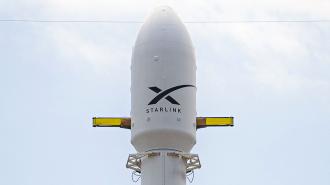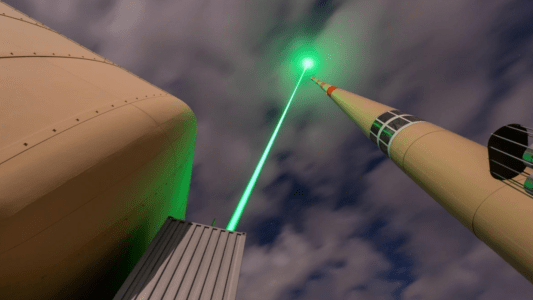When the FCC agreed to let SpaceX deploy another 7,500 Starlink satellites, one condition of the approval was that the company work with the scientific community to minimize Starlink’s negative impact on astronomy.
Now, SpaceX has signed a coordination agreement with the National Science Foundation (NSF) that details its plans to make the satellites less disruptive to astronomers.
Starlink satellites are showing up in optical telescopes and affecting observations by radio telescopes.
The background: In 2015, SpaceX announced its plan to launch a satellite mega-constellation capable of providing the world with low-cost internet — a move that could help close the digital divide and give billions of people access to new work and educational opportunities.
Unfortunately, that increased connectivity is coming at a cost beyond Starlink’s subscription fees — the bright satellites are showing up in optical telescopes, while their transmissions are affecting observations by radio telescopes.
“This is a big problem,” space security researcher Jessica West told Gizmodo in February 2022. “Astronomy is key to our exploration and use of space, deep space navigation, planetary defense from asteroids, and our knowledge of the Earth, solar system, and universe.”
The number of satellites in space could soar from about 5,000 today to more than 100,000 by 2030.
What’s new? SpaceX has taken steps in the past to minimize the impact of its satellites on astronomy and was voluntarily working on the coordination agreement even before it was mandated by the FCC.
Now that the agreement has been signed, scientists can see exactly what steps the company promises to take in the future to protect the night sky, from working to dim the brightness of its Gen2 satellites so that they are no longer visible to the naked eye to not transmitting from satellites passing over major observatories.
“This landmark agreement between NSF and SpaceX proves that collaboration between commercial entities and research facilities is not only a possibility, but also a positive path forward for additional cooperative opportunities,” said Tony Beasley, director of the National Radio Astronomy Observatory.
The big picture: When there were just a few hundred satellites in space, there was no real need to consider regulating them to protect the interests of scientists.
Thanks to cheaper tech and falling launch costs, though, experts predict the number of satellites in space could skyrocket from about 5,000 today to more than 100,000 by 2030, making such rules a hugely pressing matter for the scientific community.
“SpaceX has really been a leader in showing the way for other corporations.”
Richard Green
By the time such legislation passes, though, space could already be incredibly crowded.
That means scientists may need to rely on the willingness of satellite operators to work with them, even when they aren’t required to by law, and SpaceX is setting a positive precedent in that regard.
“Policy is slow,” Richard Green, an astronomer at the University of Arizona, told Space News. “The progress that we make in the short term relies entirely on the voluntary cooperation with industry, for which SpaceX has really been a leader in showing the way for other corporations.”
We’d love to hear from you! If you have a comment about this article or if you have a tip for a future Freethink story, please email us at [email protected].






